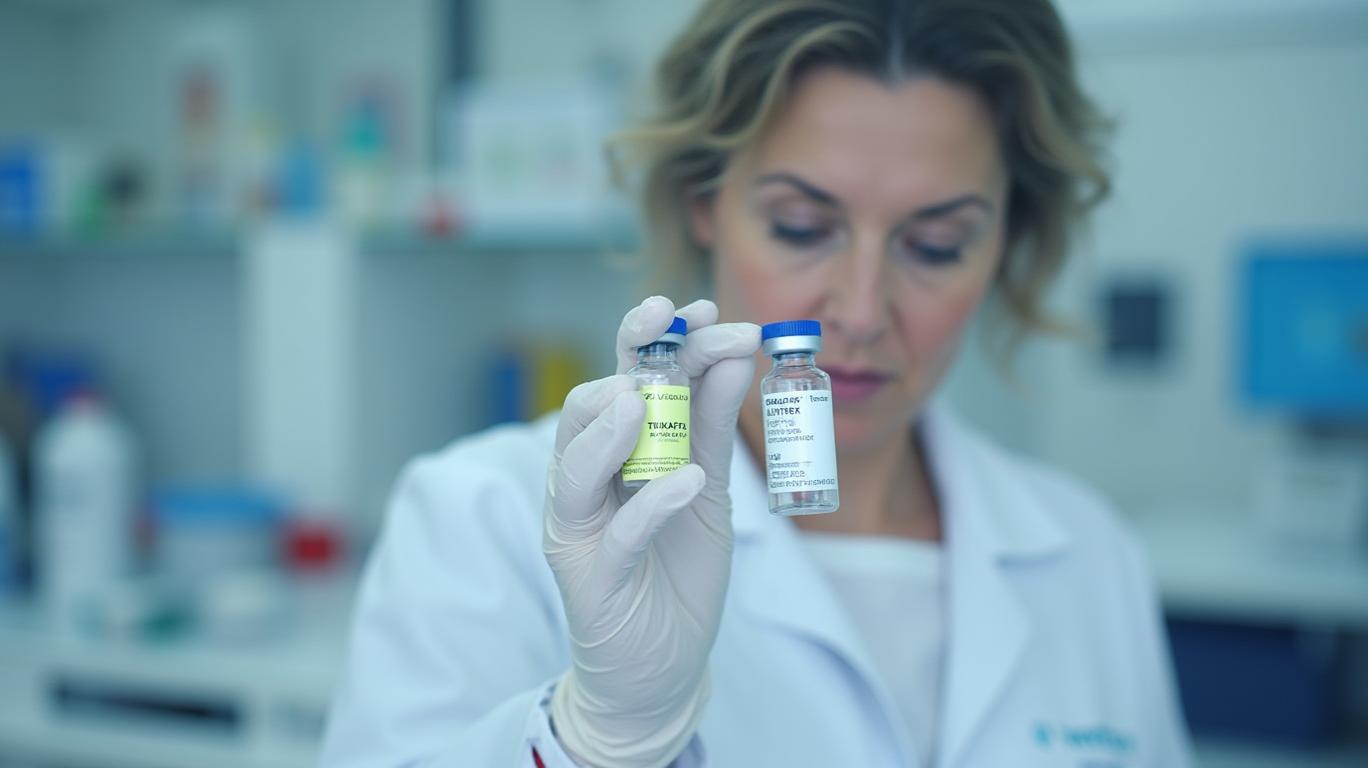Vertex Q1 2025: Revenue Rises Amid Earnings Headwinds, Pipeline Progress Fuels Optimism
Vertex Pharmaceuticals (VRTX) delivered a mixed performance in Q1 2025, with revenue growth outpacing expectations but Non-GAAP earnings under pressure from rising costs and one-time charges. While the company raised its full-year revenue guidance, investors must weigh the strength of its cystic fibrosis (CF) franchise and emerging therapies against lingering headwinds in international markets and the risks inherent in its ambitious R&D pipeline.
Revenue Growth: U.S. Dominance Masks International Struggles
Vertex’s total revenue climbed 3% YoY to $2.77 billion in Q1 2025, driven by a 9% surge in U.S. sales to $1.66 billion. The continued uptake of TRIKAFTA/KAFTRIO, the global launch of ALYFTREK, and the March 2025 debut of JOURNAVX—a non-opioid acute pain therapy—propelled domestic demand. ALYFTREK, Vertex’s first CF treatment for younger patients, has already secured U.S. approval and is awaiting European regulatory greenlights, which could unlock additional growth.
However, international revenue fell 5% to $1.11 billion, with Vertex citing “revenue declines in Russia due to intellectual property rights violations.” This drag highlights the fragility of geographic diversification in biopharma, where geopolitical risks can disrupt even the most promising markets. Despite this, Vertex emphasized that global IP protections remain intact, and strong demand in non-Russian regions (e.g., Europe, Japan) should offset losses over time.

Earnings: Non-GAAP EPS Dips, GAAP Hit by Program Impairment
While revenue grew, Vertex’s Non-GAAP diluted EPS dropped 15% to $4.06 from $4.76 in Q1 2024. This decline reflects higher operating expenses, including investments in late-stage programs like zimislecel (type 1 diabetes) and povetacicept (kidney diseases). GAAP net income fell further to $646 million, due to a $379 million impairment charge for VX-264, a discontinued diabetes candidate.
The Non-GAAP vs. GAAP gap of $650–$700 million stems from stock-based compensation and other adjustments, underscoring the importance of parsing Vertex’s financials carefully. Investors focused on cash flow and long-term growth may prefer Non-GAAP metrics, but the GAAP results highlight the inherent risks of clinical trial failures.
Pipeline Momentum and Strategic Priorities
Vertex’s pipeline remains its crown jewel. Key highlights include:
- CASGEVY®: Now available in 65 global treatment centers, with European reimbursement deals expanding access.
- JOURNAVX™: Surpassed 20,000 prescriptions filled in just weeks, with Medicaid formulary access boosting adoption.
- Povetacicept: On track for a potential 2026 U.S. accelerated approval in IgA nephropathy, a kidney disease with limited treatment options.
- Zimislecel: Phase 3 data expected in mid-2025, positioning it as a potential breakthrough for type 1 diabetes.
Vertex’s decision to discontinue VX-264—while painful—reinforces its focus on high-potential assets. The company now allocates $4.9–$5.0 billion to R&D and commercialization, prioritizing therapies with clear regulatory pathways and market demand.
Risks and Opportunities Ahead
Vertex’s revised full-year revenue guidance of $11.85–12.0 billion reflects cautious optimism. Achieving the upper end hinges on:
1. ALYFTREK’s European approval: A positive EMA opinion in H2 2025 would unlock a critical market.
2. CASGEVY reimbursement: Wider coverage in Europe and the Middle East is critical to offsetting Russia’s drag.
3. JOURNAVX’s real-world uptake: Early prescribing data is promising, but long-term adherence and insurance coverage will matter most.
Conclusion: Vertex’s Growth Engine Remains Intact, but Risks Linger
Vertex’s Q1 results reveal a company in transition: its CF franchise remains dominant, but the shift toward new therapies like JOURNAVX and its kidney disease pipeline demands patience. While Non-GAAP EPS declined, revenue growth and the raised guidance signal confidence in long-term prospects.
Crucial catalysts in 2025 include ALYFTREK’s EMA approval (due by year-end), CASGEVY’s European expansion, and interim data reads for inaxaplin (for kidney disease) and povetacicept. Should these milestones materialize, Vertex could solidify its position as a leader in rare diseases and non-opioid pain therapies.
However, investors must remain vigilant. The 5% drop in international revenue—and the potential for further headwinds in regions beyond Russia—adds uncertainty. Meanwhile, R&D costs are rising, with Vertex projecting $4.9–$5.0 billion in expenses for 2025. For now, the stock’s 12-month performance (up ~18% vs. the BTK’s 7% gain) reflects this cautious optimism.
In sum, Vertex’s pipeline is firing on all cylinders, but execution on existing therapies and regulatory wins will determine whether its stock can sustain momentum. For long-term investors, the pieces are in place—but the puzzle isn’t yet complete.

Comments
No comments yet